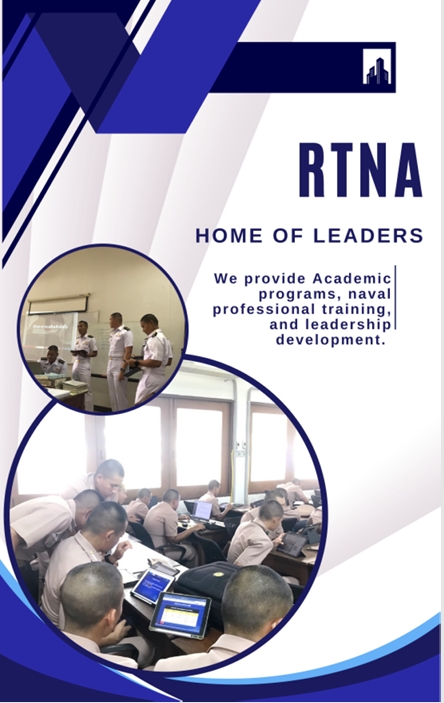Comparative Study of Maritime boundary Judgements for Determining Maritime Delimitation between Thailand-Cambodia in the OCA above Latitude 11 N.
Keywords:
Maritime Delimitation, Overlapping Claimed Area (OCA), Equitable Solution, Adjusted Median LineAbstract
This article aims at studying possible solutions for maritime delimitation between Thailand and Cambodia. Information for analysis was sourced from judgments by the JCJ. International Court of Justice (ICJ) and International Tribunal for the Law of the Sea (ITLOS). These judgment involve circumstances, particularly the physical and geographical surrounding, such as the characteristic of coastline, islands, and rocks including. Position and sizes of offshore features similar to case between Thailand-Cambodia. The selected judgments are case between Netherlands-Germany-Denmark, Bangladesh-Myanmar, Ukraine-Romania and Nicaragua-Columbia. The results reveal that solutions for delineating maritime boundary between Thailand and Cambodia vary depending on circumstances. Otherwise, there are two significantly solutions: the first considers all offshore features regarding delineation, while the second disregards all offshore features in delineation. Unexpectedly, the new method for equidistance adjustment arises from this article suggests that equidistance line can be adjusted by ratio of the offshore feature’s area. Actually, the adjustment of equidistance line could be done based on the ratio of the length of the relevant coastlines and the ratio of offshore island and rock areas. This article can guide research about equidistance modification between Thailand and Cambodia. The purpose of this article is to study UNCLOS 1982 regarding Technical Aspects for the Law of the Sea using the overlapping claimed area between Thailand and Cambodia as a case study. The results of the study are the author's views and opinions only and do not affect status of overlapping claimed area between Thailand and Cambodia.
References
สุรเกียรติ์ เสถียรไทย. (2554). พื้นที่ทับซ้อนทางทะเล ไทย-กัมพูชา: ทางเลือกและข้อเสนอแนะ: จุลสารความ มั่นคงศึกษา ฉบับที่ 93. กรุงเทพฯ: สถาบันการข่าวกรอง, สำนักข่าวกรองแห่งชาติ.
อนุวัฒน์ นทีวัฒนา. (2551). ความหลากหลายของเกาะในประเทศไทย. เอกสารเผยแพร่สำนักอนุรักษ์ ทรัพยากรทางทะเลและชายฝั่ง ฉบับที่ 39. กรุงเทพฯ: กระทรวงทรัพยากรธรรมชาติและ สิ่งแวดล้อม.
Nem Sowath. (2559). Rocher Kusrovie [Facebook]. สถานที่ผลิต: หน่วยงานที่เผยแพร่. (ม.ป.ท.: ม.ป.พ.)
International Court of Justice (ICJ). (Judgment of 1969, 20 February). North Sea Continental Shelf Cases (Federal Republic of Germany/Denmark; Federal Republic of Germany/Netherlands). International Court of Justice.
International Court of Justice (ICJ). (Judgment of 2009, 3 February). Maritime Delimitation in the Black Sea (Romania v. Ukraine). International Court of Justice.
International Court of Justice (ICJ). (Judgment of 2012, 19 November). Territorial and Maritime Dispute (Nicaragua v. Colombia). International Court of Justice.
International Tribunal for the Law of the Sea (ITLOS). (Judgment of 2012, 14 March). Dispute Concerning Delimitation of the Maritime Boundary between Bangladesh and Myanmar in the Bay of Bengal. Hamburg: International Tribunal for the Law of the Sea.
Schofield, Clive Howard (1999). Maritime boundary delimitation in the gulf of Thailand. Durham theses, Durham University. Available at Durham E-Theses Online: http://etheses.dur.ac.uk/4351/
United Nations, Division for Ocean Affairs and the Law of the Sea, Office of Legal Affairs. (2001). United Nations Convention on the Law of the Sea 1982. Retrieved from https://www.un.org/depts/los/convention_agreements/texts/unclos/unclos_e.pdf

Downloads
Published
Issue
Section
License
Copyright (c) 2024 Royal Thai Naval Academy

This work is licensed under a Creative Commons Attribution-NonCommercial-NoDerivatives 4.0 International License.
The author has the sole responsibility for the material published in RTNA Journal of Social Sciences, Humanities, and Education, which the editorial team may not agree on that material.
RTNA Journal of Social Sciences, Humanities, and Education owns the copyright of the text, the illustration, or other material published in the journal. No parts or the whole of the material published may be disseminated or used in any form without first obtaining written permission from the academy.





